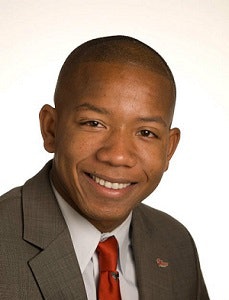It seems every time we take a look at higher education publications, we read about a college or university that is on the brink of a merger, associating with another institution, and/or facing the risk of closure. Higher education globally is facing unprecedented challenges, and universities and colleges need to figure out effective ways to reinvent themselves. In the coming decade, institutions of higher education will either adapt to the ever-changing environment for their survival or be forced out of business. Increased competition and the emergence of institutions such as online universities, code academies and bootcamps where students can gain skills and certification in certain areas in a short period of time are increasingly becoming an option for many students compared to attending a four-year program at traditional universities and colleges.
 Dr. Edward Summers
Dr. Edward SummersA 2017 TIAA Institute study reports that these challenges are driven by rapid growth in mobility, communication, technology and demands for skills and credentials, which have all led to a disruption of the higher education sector. This disruption may have a positive impact for some, and may lead to the destruction of others. Leadership at all levels of higher education must adapt and rethink financial models, governing structures, curricula innovation and operating principles. Further, despite the previous reliance of colleges and universities in the United States on state and federal partnerships and financial support, it is unlikely that this strategy will continue to work in the near future.
Since the 2008 economic recession, institutions of higher education have been looking for ways to lower their costs while at the same time remain competitive in an increasingly contracting market. Moody’s Investors Service revised the 2018 outlook for U.S. higher education to negative from stable as aggregate operating revenue moderates while expense growth increases. Despite the rise in cost and decline in revenue, it has been well reported that there have been a major demographics shift in certain parts of the country where the number of students graduating from high school has declined whereas certain regions will and have experienced an increase. The economic challenges experienced by universities and colleges means that institutions need to become even more strategic and creative about previous options that were almost unthinkable previously.
 Dr. Adriel A. Hilton
Dr. Adriel A. HiltonStepping Away from the Brink from our experiences working at various colleges and universities, we have learned that there are strategies institutions can apply and save themselves from mergers, acquisitions and/or face their fate of closure.
First, leaders should have a clear vision that inspires all constituencies and gives them a reason to support the strategies that need to be implemented for a better future. Vision provides a clear picture of where the institution is going and allows for institutional buy in. Strategic vision and buy in allows for a positive level of institutional engagement. This will ensure that there is oneness when it comes to communicating and supporting the vision of the institution. It will permit everyone to feel a sense of ownership and pride in the institution. The support of the community can be fundamental during turbulent times.
Below we outline several items we have learned from our lived experiences and senior level administrators and members of the professoriate.
- Universities and colleges need to realistically evaluate themselves, and understand their position in the market.
- They need to completely and fully understand their financial state and enrollment while developing and implementing creative and sustainable ways to prevent their closures and acquisitions. Using predictive analytics could assist them in understanding where they are and forging ways of how to proceed into the future.
- Institutions need to understand their gaps and identify reasons as to why those gaps exist.
- They need to have a true self-assessment and determine what their future looks like. To survive these turbulent times, strategies need to be created to change an institution’s respective market position.
- Institutions must create a culture of change with a management team that will advance the institution. This can help in coming up with strategies to prevent repeating past mistakes that may disastrously hurt their future.
- University and college employees should not only clearly understand their roles and responsibilities within the college or university but also recognize that everyone plays a role in advancing an institution.
- Honesty with faculty and staff is critical and engaging them in efforts to move the institution in a different direction will be paramount. We must ensure that employees such as custodians understand the importance of keeping facilities clean as it can impact enrollment and retention, ground keepers must realize that campus aesthetics and beauty impacts enrollment decisions, and faculty must understand that being agile is critical to meeting the demands of current and future students.
In the end, these are a few items that will determine the future of institutions. Strategic vision is essential. Ultimately, it is about visionary leadership and management, foreseeing and forecasting the future and ensuring structures are put in place to deal with the future. There must be absolute honesty and transparency at all levels of leadership. Institutions can enlist partners and stakeholders to assist in moving in the right direction. Leaders must engage all areas of the institution: create alliances and new partnerships to assist with appropriately and adequately addressing the increasingly complex issues confronting higher education. Last but certainly not least, good financial management, fundraising and overall sound management practices can save institutions on the brink of their demise. Let us work together to save our colleges and universities. Let us be pioneers in dedicating the future of higher education.
Dr. Edward Summers is an assistant professor of public administration at Long Island University – Brooklyn and an incoming executive director of The Bronx Private Industry Council.
Dr. Adriel A. Hilton is the dean of students and diversity officer at Seton Hill University.



















